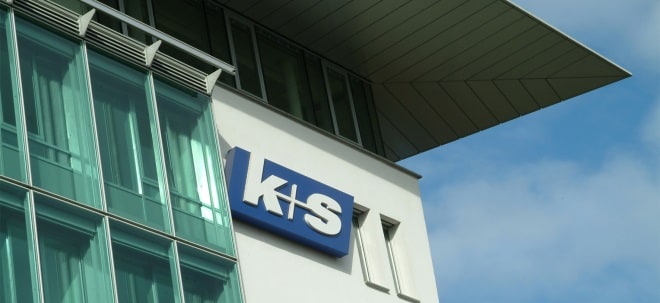|
&zeitraum=5&bname=&save_presets=0&zoom.x=0&ind_news_art=&zeitvon=0&bis=1178193286.65766&typ=1&ind_gd200=OFF&skalierung=dec&beingabe=Name%2C%20WKN%2C%20ISIN&zeitbis=&ind_volume=ON&cookies=HASH(0x8558540)&boerse_id=1&ago=Aktualisieren&go=upper&von=0&banner_ref=HASH(0xa69b0e8)&req_host=www.ariva.de&b=&ind_gd38=ON)
Der Bankensektor in Indien sieht immer wieder vielversprechend aus. Nachdem ich den Anstieg der State Bank of India leider nur auf der Watch mitgemacht hab, sieht mein zweiter Kandidat hier recht passabel aus - ein Potential von ca. 15% sollte vorhanden sein.
Dem angefügten Artikel aus dem Economist zufolge ist eine Zunahme des Kreditbereichs von ~ 20% p.a. zu erwarten, resultierend aus dem weiterhin starken Wachstum der Indischen Ökonomie. Natürlich ist das Wort "Lending" gerade etwas überstrapaziert, aber vielleicht gerade darum?!
Freu mich über Meinungen, Lob, Kritik, Verleumdungen, Jubel und Häme,
W.
**** http://www.economist.com/PrinterFriendly.cfm?story_id=9104331 Indian business
May 2nd 2007
From The Economist Intelligence Unit ViewsWire
ICICI Bank aims for growth as the economy booms India's second-largest bank, ICICI Bank, plans to raise around US$5bn through public offers in the US and India, highlighting the growing demand for capital being generated by a booming economy. If the planned offers reflect the bank's confidence in the Indian growth story, the Economist Intelligence Unit's own forecasts also show that economic growth and the resulting demand for credit will remain strong. Indeed we forecast that bank lending will grow by around 19-20% a year in the next three years, around two-and-a-half times the expected rate of GDP growth. ICICI Bank's board approved the equity issue on April 28th. The bank, which is listed in both Mumbai and New York, intends to raise some Rs150bn (US$3.7bn at Rs40.8:US$1) of the new capital in the US via an American depositary receipt (ADR) issue, with the remaining Rs50bn to come through a domestic share offering. The equity sales are likely to take place by June. One of the main rationales for the offerings is to finance new lending both to retail customers and the corporate sector (although the equity issue will also help to finance the bank's efforts to comply with stricter capital requirements). India's buoyant economy is creating rising levels of affluence and at the same time expanding the opportunities for lending as traditionally thrift-conscious consumers become more accustomed to spending on credit. (The number of credit cards in circulation in India has more than doubled in the past three years; ICICI Bank, incidentally, is the largest issuer, with 5.2m credit cards.) We estimate that private consumption grew by about 10% in the fiscal year ended March 31st, and that it will grow by more than 8% this year. The corporate sector is perhaps an even more exciting opportunity for large commercial lenders such as ICICI Bank. Indian companies are particularly expansion-minded at the moment, their confidence boosted by strong growth in their domestic markets. ICICI Bank talks of a US$500bn "investment pipeline", suggesting it is confident that the investment plans of Indian companies will increase demand for corporate financing. Although high-profile overseas acquisitions by Indian companies have made headlines recently, it seems the bank expects a surge in investment in infrastructure and manufacturing in India to be a key ingredient in rising demand for credit. The prime minister, Manmohan Singh, has said that India needs to spend US$320bn on infrastructure over the next five years, and the budget for fiscal 2007/08, unveiled on February 28th, called for a large increase in spending on rural infrastructure. In year-end financial results, also unveiled on April 28th, ICICI Bank reported a 22% rise in after-tax profit to Rs31.1bn (US$762m at Rs40.8:US$1). The bank's total deposits rose by 40% to Rs2.31trn. The bank also saw a 37% rise in its rural lending portfolio. However, year-on-year after-tax profit growth in the fourth quarter of 2006/07 was a subdued 4.4%, due to higher provisioning costs. Nonetheless, the prospects for India's financial services sector over the next few years remain bright. Growth will be driven by rising personal incomes, corporate restructuring, financial sector liberalisation and the further development of a more consumer-driven, credit-oriented culture. This is likely to translate into more business for commercial lenders. Indeed, we forecast that total lending will rise substantially as a share of GDP, to reach 75% in 2011. Underscoring the rapid growth in lending that India's economic boom is generating, this percentage compares with an estimated 63% last year and 54% as recently as 2000. _________________ ignorance is bliss
|

 Thread abonnieren
Thread abonnieren


&zeitraum=5&bname=&save_presets=0&zoom.x=0&ind_news_art=&zeitvon=0&bis=1178193286.65766&typ=1&ind_gd200=OFF&skalierung=dec&beingabe=Name%2C%20WKN%2C%20ISIN&zeitbis=&ind_volume=ON&cookies=HASH(0x8558540)&boerse_id=1&ago=Aktualisieren&go=upper&von=0&banner_ref=HASH(0xa69b0e8)&req_host=www.ariva.de&b=&ind_gd38=ON)
